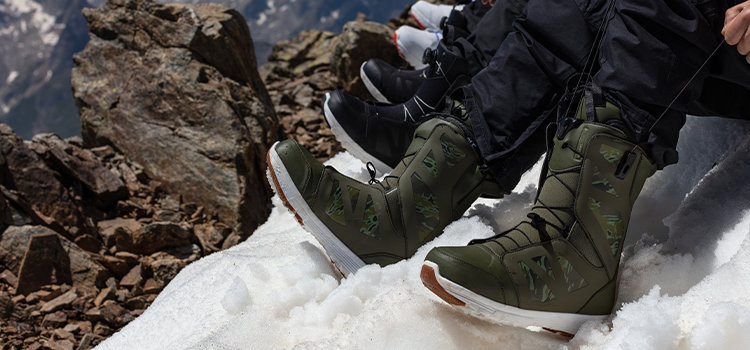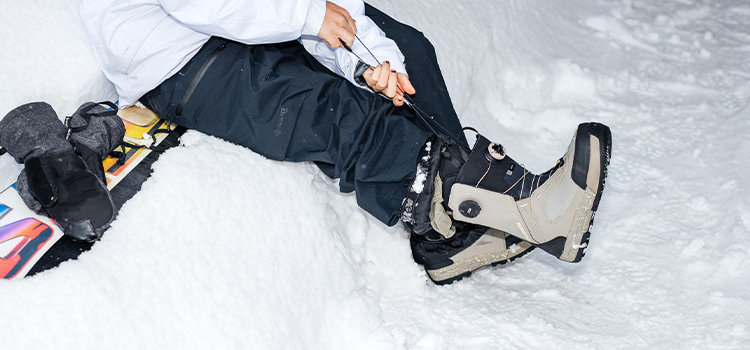There are three main lacing options, each with its own pros and cons:

Traditional Laces
Traditional laces have been used on snowboard boots for years. They’re easy to use and customizable where you need them. They're inexpensive and easy to replace when needed. The downside to traditional laces is that they can be difficult to tie for beginners at first and are not easily adjustable while wearing gloves. They’re also a change they loosen during the day, so you might find yourself needing to make adjustments periodically.
Pros:
- Ease of use
- Inexpensive to replace
- Customizable tension
Cons:
- It can be difficult to tie for beginners or while wearing gloves
- Can loosen throughout the day

Quick-Pull Laces
Many brands have developed their own quick-pull lacing for a faster, more convenient closure compared to traditional laces. Most quick-pull systems, also referred to as speed lacing, feature independent zones for the lower forefoot and the ankle/lower leg, allowing for easy customization of your fit. And another big advantage of quick-pull laces is the ability to adjust them without needing to remove your gloves.
Some might find quick-pull laces a bit complicated at first and struggle to get them as tight as they would like, but with some practice, you’ll find it to be easier than traditional laces. A downside to quick-pull laces is that they can develop pressure points at the eyelets where the laces connect to the boots, and they may loosen throughout the day. Quick-pull laces are not as quick to replace as traditional laces, but with a quick gear check before you start your day, you can ensure everything is good to go.
Pros:
- Fast and convenient
- Independent zones for a more customized fit
- Can be adjusted with your gloves on
Cons:
- Slight learning curve
- Pressure points can sometimes develop at the eyelets
- Chance of loosening throughout the day
- Not as quick to replace as laces

Boa Lacing
The Boa fit system is now an industry standard for snowboard boots. Boa boots feature a fast and convenient micro-adjustment dial that can be easily twisted to tighten with one hand, even with gloves on. Boa dials offer even pressure across your feet and are easy to loosen by quickly popping the dial. And the good news is that with Boas, they won’t loosen throughout the day.
Snowboard Boa boots can feature single, double, triple Boas, and even a combination of lace and Boa. Single Boa boots use one dial to adjust the entire external lace system on each boot. Double Boa boots are the most popular and feature two independent zones over the forefoot and ankle/lower leg, similar to quick-pull lacing. High-end Boa boots can feature three Boas, which are similar to double Boa boots with an additional Boa for the internal liner. Boa dials can take some time to replace if a part gets damaged, so it can end your day prematurely. However, Boa offers a lifetime warranty on the closure system, so you won’t be left high and dry.
Pros:
- Precise, micro-adjustment for a fine-tuned fit
- Can be adjusted with one hand and with gloves on
- Don’t loosen throughout the day
Cons:
- Can develop pressure points if too tight
- Takes time to replace
- Adds to the boots’ overall cost
Back to Top